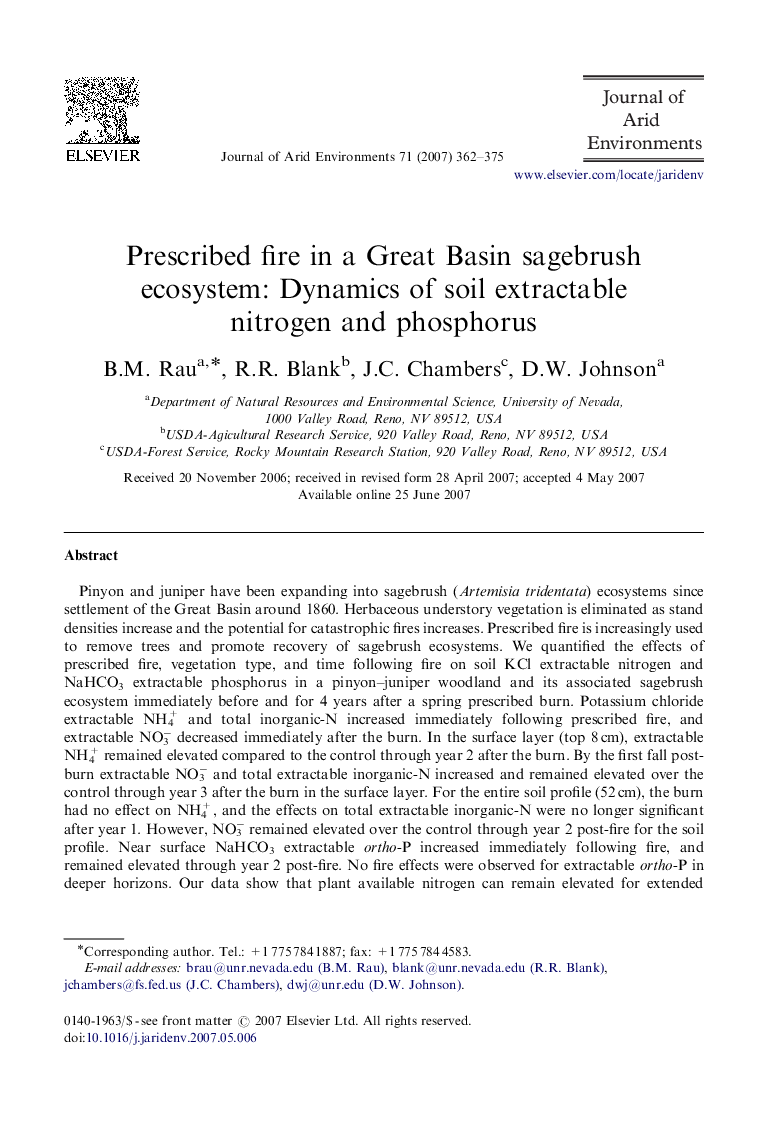| Article ID | Journal | Published Year | Pages | File Type |
|---|---|---|---|---|
| 4394443 | Journal of Arid Environments | 2007 | 14 Pages |
Pinyon and juniper have been expanding into sagebrush (Artemisia tridentata) ecosystems since settlement of the Great Basin around 1860. Herbaceous understory vegetation is eliminated as stand densities increase and the potential for catastrophic fires increases. Prescribed fire is increasingly used to remove trees and promote recovery of sagebrush ecosystems. We quantified the effects of prescribed fire, vegetation type, and time following fire on soil KCl extractable nitrogen and NaHCO3 extractable phosphorus in a pinyon–juniper woodland and its associated sagebrush ecosystem immediately before and for 4 years after a spring prescribed burn. Potassium chloride extractable NH4+ and total inorganic-N increased immediately following prescribed fire, and extractable NO3− decreased immediately after the burn. In the surface layer (top 8 cm), extractable NH4+ remained elevated compared to the control through year 2 after the burn. By the first fall post-burn extractable NO3− and total extractable inorganic-N increased and remained elevated over the control through year 3 after the burn in the surface layer. For the entire soil profile (52 cm), the burn had no effect on NH4+, and the effects on total extractable inorganic-N were no longer significant after year 1. However, NO3− remained elevated over the control through year 2 post-fire for the soil profile. Near surface NaHCO3 extractable ortho-P increased immediately following fire, and remained elevated through year 2 post-fire. No fire effects were observed for extractable ortho-P in deeper horizons. Our data show that plant available nitrogen can remain elevated for extended periods following prescribed fire. This can influence regrowth and seedling establishment of native plant species, invasion of exotic plant species and, ultimately, site recovery potential.
